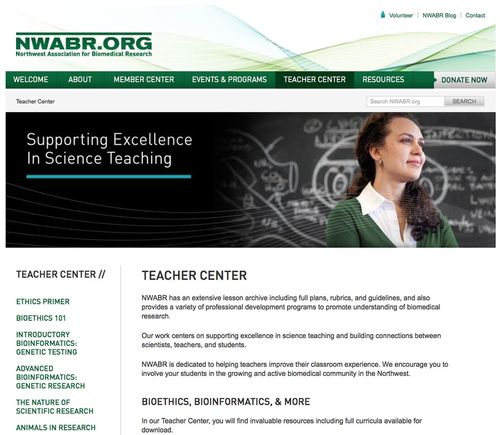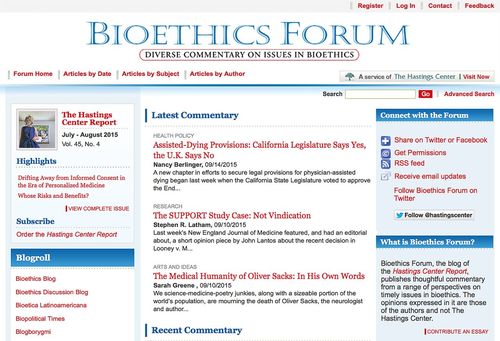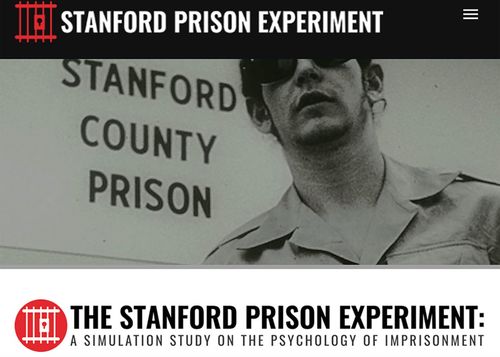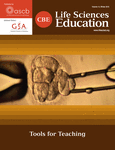Online Resources for Engaging Students in Bioethical Discussions
New medical technologies and products, as well as changing demographics and social mores, drive dynamic conversations about public health and scientific research. These shifts and discoveries introduce new ethical questions—or fresh takes on old questions. Should we develop a particular new technology or pursue a specific line of research given that we have limited resources? Who should benefit from new discoveries—all individuals or only those who can afford the treatments? Addressing bioethical issues is a growing component of critical thinking within science curricula.
Engaging students with controversial current events can be a powerful way to capture their interest. However, popular news coverage of bioethical quandaries often reduces complex issues to mere inflammatory sound bites. The rapidly changing nature of the questions with which bioethics is concerned makes the subject particularly amenable to the use of online resources as primary or supplemental teaching materials. In this review, we highlight free online resources for teaching bioethics that will be useful for educators working with high school and undergraduate students. Though accessed online, most of these resources are text based.
CURRICULA THAT INCLUDE FRAMEWORKS FOR ETHICAL ANALYSIS
Two websites provide downloadable PDFs of comprehensive curricular materials, detailed teacher guides for each lesson, copymasters, and other resources. All PDFs introduce the principles of bioethics—respect for persons, maximizing benefits/minimizing harm, and justice. A particular strength of these materials is their use of frameworks designed to guide students through the process of thoughtfully analyzing ethical controversies by 1) identifying the relevant facts, which helps students separate information from emotional response; 2) identifying stakeholders—the people or institutions affected by the outcome of a situation; 3) clarifying stakeholder values, interests, and concerns; and 4) making a decision that is supported by a well-reasoned justification. Employing stakeholders to introduce potentially opposing viewpoints can eliminate or diffuse tensions that might otherwise arise if students were asked to represent and defend their own personal views. While designed for grades 7–12 or 9–12, many of these materials could be used or easily adapted for use with undergraduates.
The Teacher Center section of the Northwest Association for Biomedical Research (NWABR; www.nwabr.org; Figure 1) includes six sets of excellent bioethics materials. An Ethics Primer (202 pp.) provides an easy to understand introduction to ethics, including a useful table that compares five ethical perspectives. The 31 classroom strategies provide options for structuring ethical discussions; grading rubrics are available for five writing assignments. Also included are four ethical decision-making frameworks; a detailed grading guide is provided for one of these. Although additional online resources are listed, many of the URLs no longer function. Bioethics 101 (75 pp.) provides a sequenced set of five interactive lessons that culminate in a case study about a clinical trial of a drug. The curriculum incorporates “best of” strategies recommended by teachers who had used the Primer for several years. The Science and Ethics of … series provides sequenced sets of five to six lessons that address Animal Research (200 pp.), HIV Vaccine Research (204 pp.), Humans in Research (154 pp.), and Stem Cell Research (168 pp.). The NWABR materials include correlations to the Common Core State Standards for English Language Arts and Literacy (Council of Chief State School Officers, 2010) and A Framework for K–12 Science Education (National Research Council, 2011).

Figure 1. The Teacher Center section of the NWABR website features curricular materials that incorporate the three essential components of effective bioethics teaching—facilitating students’ understanding of ethical principles, well-structured lesson strategies, and ethical decision-making frameworks to guide students’ analysis of ethical controversies (www.nwabr.org/teacher-center).
Exploring Bioethics (350 pp.) is part of the National Institutes of Health Curriculum Supplement Series (https://science.education.nih.gov/supplements/nih9/bioethics/guide/pdf/teachers_guide.pdf). It includes six modules (three lessons in each module) that address the ethics of enhancement in sports, mandatory school vaccination policies, fair distribution of organs for transplantation, genetic testing for diseases, research involving human participants, and the use of animals in research. The modules use a four-question ethical decision-making framework; a grading guide is provided. Additional Teacher Support Materials (pp. 10–11) provide answer keys, background materials, modifications and extensions, and a PowerPoint for use with one of the modules.
OTHER CURRICULA AND CASE STUDIES
New York University’s School of Medicine High School Bioethics website (www.med.nyu.edu/highschoolbioethics) features bioethics briefs and modules. The 19 briefs are case vignettes with discussion questions and links to additional information. They cover a range of healthcare-related topics, such as ethical issues associated with the HPV vaccine, H1N1 vaccinations, facial transplantation, and the use of Ritalin and Adderall as study aids. Two briefs include videos—one provides information on genetic testing for autism spectrum disorders (4:01 min), and one raises ethical questions in relation to the NFL and brain injury (9:27 min). The nine instructional modules, available as PDFs, cover the nature of ethics, conceptual foundations of bioethics, organ transplantation, embryonic stem cell research, assisted reproductive technologies, lifestyle drugs, prolonging the life of a person in a persistent vegetative state, and animal research, and include a guide to Jonathan D. Moreno’s 2011 book The Body Politic: The Battle Over Science in America. Each module includes background information, a sequence of student activities and discussions, and supplemental readings. While examples of student handouts are shown, they are too small to use as copymasters, so instructors would need to produce their own. In addition, missing letters in some words create some reading challenges.
The Nuffield Council on Bioethics in the United Kingdom examines and reports on ethical issues in biology and medicine (http://nuffieldbioethics.org). The Education section of their website includes seven sets of lessons under Teaching Resources, appropriate for a wide range of age levels. The lessons address clinical research, organ and tissue donation, biofuels, personalized healthcare, dementia, forensic use of bioinformation, and research involving animals. Several lessons were based on reports prepared by the council. The teacher guides are very brief and are divided into multiple PDFs, which makes it difficult to follow the lesson plans. Some of the materials have a UK orientation, which may limit their usefulness for U.S. students. For example, the organizations and mechanisms through which organ donation is coordinated in the UK or analyzing specific policies of the UK Department of Health are likely to interest U.S. students only as a comparison with U.S. policies. The Policy section of the site provides summaries of European Court judgments on the storage and use of genetic information. While ethical concerns about the storage and use of large amounts of genetic data are not appropriate for younger students, this resource could be useful for older students to make comparisons between countries. In addition to text-based materials, one lesson also features a movie, Processes, Papers and Professors: How Clinical Research in Young People Gets Approved (16:19 min). The movie begins with a case that motivates a proposal for an asthma study in children. A mock institutional review board discussion of the simulated proposal provides a unique opportunity for students to observe an example of careful oversight of human research. The film is available at http://nuffieldbioethics.org/project/children-research/films-young-peoples-perspectives-clinical-ethics-reviews/.
PBS LearningMedia also has short video excerpts from the NOVA episode “Cracking Your Genetic Code” that would be appropriate for use as case studies. “The Ethics of Preimplantation Genetic Diagnosis” (www.pbslearningmedia.org/resource/cygc12.sci.life.gen.prediagnosis/the-ethics-of-preimplantation-genetic-diagnosis; 4:44 min; Figure 2) and “Should We Screen for Cancer Genes?” (www.pbslearningmedia.org/resource/cygc12.sci.life.gen.cancergene/should-we-screen-for-cancer-genes; 3:54 min) are both available in English and Spanish audio with optional closed captions and can be downloaded for offline viewing.

Figure 2. The video clip “The Ethics of Preimplantation Genetic Diagnosis” explores the current benefits and concerns regarding potential future uses of preimplantation diagnosis in screening for diseases and other traits. It is available at www.pbslearningmedia.org/resource/cygc12.sci.life.gen.prediagnosis/the-ethics-of-preimplantation-genetic-diagnosis.
RESOURCES THAT COVER CURRENT NEWS AND OPINIONS
Blogs that publish and aggregate current opinions are particularly useful when approaching subjects of ongoing bioethical controversy, such as recent legal decisions and cases being reported in the media. One of the best examples is the Bioethics Forum (www.thehastingscenter.org/bioethicsforum; Figure 3) by the Hastings Center, which generally posts several entries a month. The opinions expressed in the blog are those of the authors—who range from medical students to professors of bioethics—and not official positions of the Hastings Center. Recent topics include pronoun use with transgender patients, the use of cognitive enhancers in university students, and the regulation of surrogate motherhood. The previously mentioned Nuffield Council on Bioethics website also has a blog that is updated regularly (http://nuffieldbioethics.org/blog). In 2014, the Nuffield blog did a series of posts that focused specifically on bioethics and education (http://nuffieldbioethics.org/education/materials-resources-educators/blog-series-bioethics-education). The “Use of Multimedia in Bioethics Education” post includes links to 15 short videos (1:57–6:08 min) related to topics in seven council reports. For example, a University of Leicester–produced video on Model Organisms in Biomedical Research (6:24 min) provides an overview of how yeast and Drosophila research can be used to explore questions related to human health before moving to studies in mice. The Girl with Three Biological Parents (6:08 min) is a BBC-produced video on the controversy about use of mitochondrial replacement in infertility treatment. The author also maintains a blog titled BioethicsBytes: Multimedia Resources for Teaching Bioethics (https://bioethicsbytes.wordpress.com). The posts include short videos from TV news, movie trailers, and student-produced videos; inaccuracies in the videos are noted by the blog author.

Figure 3. The Bioethics Forum on the Hastings Center website publishes several posts a month about current issues in bioethics (www.thehastingscenter.org/bioethicsforum).
The Bioethics Blog Tracker on the Georgetown University bioethics website (https://bioethics.georgetown.edu/explore-bioethics/bioethics-blogs) functions as an aggregator, republishing current posts from more than 30 separate bioethics blogs. The collection often posts multiple entries in one day, with topics ranging from funding medical research through the viral ice bucket challenge to successful womb transplantation. In general, the articles are written for the educated layperson, but considering the specificity of the issues discussed in the posts, they would likely be more suitable for advanced students with prior experience in bioethics.
RESEARCH ETHICS AND THE PROTECTION OF HUMAN PARTICIPANTS
In 2015, two films were released about infamous social psychology experiments. Michael Almereyda’s Experimenter depicts the work of Yale psychologist Stanley Milgram, who tested obedience to authority by instructing his study participants to deliver what they believed were increasingly painful electric shocks to an unseen (but not unheard) actor whom participants believed to be a fellow research participant. The Stanford Prison Experiment is an R-rated film directed by Kyle Patrick Alvarez. It is based on the study of the same name conducted by Philip Zimbardo using a mock prison in the basement of the Stanford Psychology Department. College student participants were randomly assigned to the roles of prison guard or prisoner and, in relatively short time, began exhibiting sadistic behavior or mental breakdowns. Both films, although not freely available online, could serve as material to facilitate discussions about informed consent and protecting human research participants. The Stanford Prison Experiment has an accompanying website (www.prisonexp.org; Figure 4) that is managed by the Social Psychology Network. The website features extensive educational materials: photos and documents from the original experiment; a short film clip, Stanford Prison Experiment: A Student Is Arrested (0:28); interviews; student discussion questions; and links to Zimbardo’s other work. In general, the content is written for the educated layperson and is appropriate for older high school and undergraduate students. The background and description of the experiment, located under the Story tab on the website, are available in seven languages.

Figure 4. The Stanford Prison Experiment website (www.prisonexp.org) features materials from the notorious 1971 experiment that took place in a mock prison in the basement of the Stanford Psychology Department.
To emphasize that protecting human research participants is not only of historical interest, there are resources on current controversies at Fear and Loathing in Bioethics (http://loathingbioethics.blogspot.com). The blog was started in 2010 by Carl Elliott, a professor at the Center for Bioethics at the University of Minnesota, to accompany his Investigative Journalism and Bioethics class. The blog largely covers issues concerning protection of research participants. Elliott is also the author of a lengthy 2014 article about how the homeless population, particularly in Philadelphia, is exploited in healthy human participant research: “The Best-Selling, Billion-Dollar Pills Tested on Homeless People: How the Destitute and the Mentally Ill Are Being Used as Human Lab Rats” (https://medium.com/matter/did-big-pharma-test-your-meds-on-homeless-people-a6d8d3fc7dfe).
For educators who would like to focus on the ethics of scholarship, the blog Retraction Watch (http://retractionwatch.com) documents retractions of scientific articles. The blog was started in August 2010 by two independent scholars, Adam Marcus and Ivan Oransky, in an effort to promote transparency and integrity in scientific publishing. The blog provides a unique window into the scientific process by highlighting research errors and fraud.
Bioethical controversies can provide a powerful way for students to see the relevance of science and thus engage them in learning science content. Particularly when carried out using an ethical decision-making framework, classroom discussions can also build students’ critical-thinking skills and assist them in better understanding the viewpoints of stakeholders whose values or perspectives are different from their own.
ACKNOWLEDGMENTS
We thank A. Malcolm Campbell for critical comments and helpful suggestions on this article.



